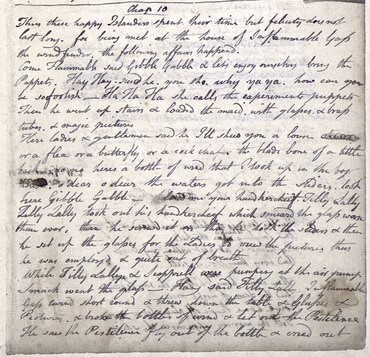One of the main principles at the Blake Archive, is “transcribe what you see.” This has been useful in making many editorial choices about how to represent an image of a work on a digital page. As Laura discussed in her Sept. 24th post, there is sometimes a tension between what we read and what we see. I am currently proofing our transcription of a manuscript known by its first lines, “then She bore Pale desire.” Just like Laura, there are times when I am unsure if I am seeing the manuscript or reading the manuscript. One example of this deals with the spacing between handwritten characters:
We have transcribed this section as “bring forth mighty powrs” which makes sense within the work and sounds like very Blake-ian language. However, when I looked at the line, before reading the transcription, I saw “bring for th mighty powrs.” In the latter case I was just seeing the line, without context, and registering the space between “for” and “th” as a separation of two words.
Like Laura, I am questioning a transcriber’s tendency to transcribe what we read, instead of what we see. I tend to read this line as “bring forth mighty powrs,” but what I see is “bring for th mighty powrs.” This seems significant because someone may read the line as saying “bring for th[e] mighty powrs” which has a different meaning than “bring forth mighty powrs.” My question now is, how to transcribe what I see if I am not sure of what I am seeing? Is that one word or two? I don’t know what the final transcription of this line will be. I imagine Morris Eaves deconstructing the handwriting to reveal that the pen ink simply “skipped” between the “r” and the “t”. In that case, would we be transcribing what we think we see?




